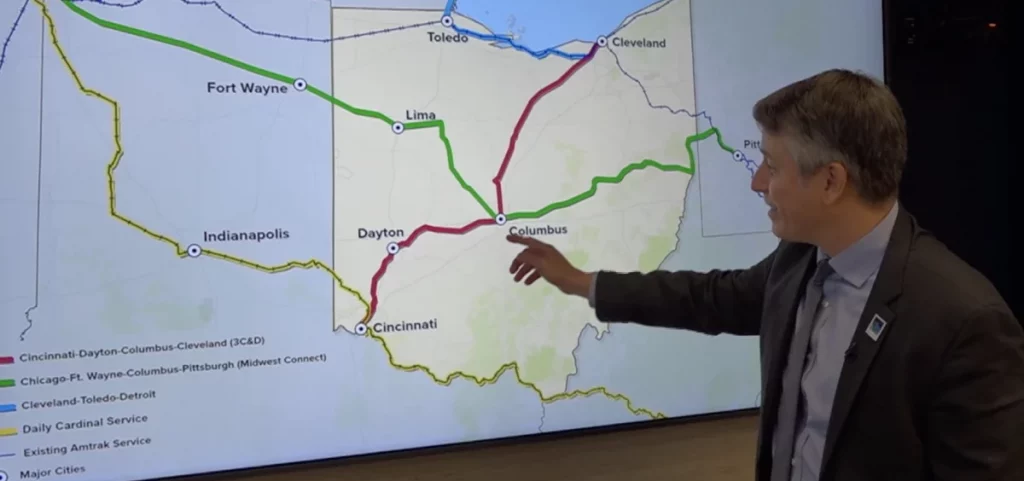News
New, extended Amtrak service in Ohio is a long-haul for planners and politicians
< < Back toCOLUMBUS, Ohio (Statehouse News Bureau) — Columbus is one of the biggest cities in America without passenger trains through Amtrak. William Murdock could talk about their possibilities all day.
“When we think about all of those cities we visit, all of those cities we compete for jobs and businesses with, almost all of them have this option,” Murdock said in an interview. “We don’t.”
Murdock is the executive director of MORPC, the Mid-Ohio Regional Planning Commission. The council works with nearly one hundred governments in and around central Ohio.
December was big for the region and the state. “Ohio did very well,” he said.
The federal government greenlit studies of four Amtrak routes crossing through Ohio’s major cities in December, as part of its corridor identification program. Those routes include new and extended lines, from a 3C+D connector between Cleveland, Columbus, Dayton and Cincinnati to a Midwest connector running through central Ohio from Pittsburgh to Chicago.
But since the announcement, Murdock and other stakeholders have been getting a lot of questions they don’t yet have the answers to.
Ohio is in just the first phase of the corridor identification program—where it will use $500,000 of Federal Railroad Administration grants to chisel out a high-level view of construction and service feasibility.
“That will answer those questions that everybody wants to know: how much, how fast will it go, where will the stations be, what’s the exact alignment? So, what had been an idea and a planning process is now actually in the federal pipeline,” Murdock said.
The study will also identify how to make freight and passenger rail better simultaneously, he said, since those cars would share lines.
It’s a long-haul—phase one could take anywhere from a year to three. The state would have to kick in 10% of the funding in the second phase and 20% in the third, if it chooses to move forward.
At first, Murdock says his understanding is that there would be fewer stations in between the major hubs, and the trains wouldn’t go faster than cars. A trek across the state would still take several hours.

Magliari, who was born in Ohio, feels the current momentum to bring and build out service in the Buckeye state. He said he wants to feel what he calls “stick-to-it-iveness.”
“Mayors or state legislators or governors come and go,” Magliari said.
The potential project timeline outlasts Gov. Mike DeWine’s remaining years as governor, and even the next governor’s first term.
All Aboard Ohio is making its case around the state in the interim.
Some lawmakers, mostly Democrats, trickled in and out of a Wednesday morning breakfast the rail advocacy organization held, where they shared results of a recent study by policy research firm Scioto Analysis. According to the study, the 3C+D corridor alone could create more than 1,000 jobs and generate between $64 and $66 million statewide.
Construction costs could be in the billions.
The Ohio Legislature can’t take much action on the issue until the next budget cycle, All Aboard Ohio board member John Esterly said. “In terms of getting the process started, the legislature has already done its job,” Esterly said in an interview.
It’s not all a layover for lawmakers, though. As the FRA study chugs along, he believes Ohio would be well-served to reclaim its seat among the Midwest Interstate Passenger Rail Commission.
An Ohio House version of a bill to do that will be introduced sometime in the next month or so, according to Rep. Mike Skindell (D-Lakewood). Several of Skindell’s GOP colleagues have signed on, and a concurrent version is in the works in the Ohio Senate.
In 2013, the state relinquished its MIPRC member status under former Gov. John Kasich. That came after Kasich turned down $400 million in federal grants for an Amtrak line running from Cleveland to Cincinnati.

